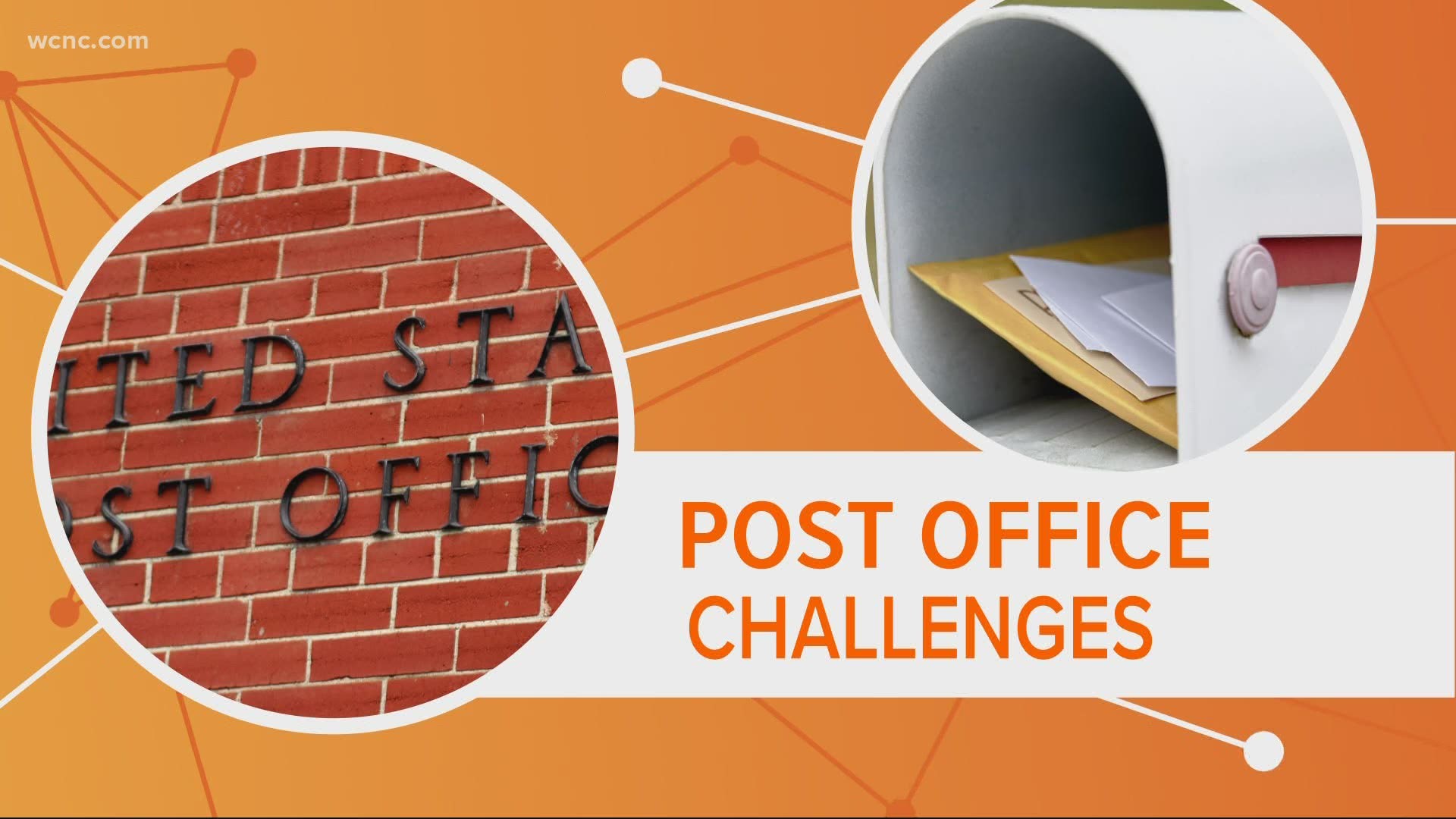CHARLOTTE, N.C. — Controversial cuts to the United States Postal Service have now been put off until after the 2020 election, but the hot-button issue has a lot of Americans wondering how something as mundane as the Post Office could become so political.
When many people think of the Postal Service, which is actually older than the country is serves, getting letters from grandma or junk mail come to mind. Which begs the question: What is going on at the Post Office?
First, the Post Office is in debt a whopping $160 billion, but it's not entirely their fault. How did we get here? There are a few factors.
Yes, people are mailing things less, but that's just one small piece of the puzzle. Congress sets postal rates, not the Post Office, so something as simple as the price of a stamp becomes political. Private parcel companies, like FedEx and UPS can change their rates to be competitive. That's not an option for the USPS.
But perhaps the biggest reason for financial troubles is the USPS' retirement funding. In 2006, Congress forced the Postal Service to prepay health benefits and pensions for its retirees. That came with a $110 billion price tag. For context, no other government agency or private company is required to do that. Usually, those benefits are paid as they're used.
So when Louis DeJoy, the new postmaster general, says he wants to cut costs, it makes sense. But many people say that reform should start on Capitol Hill, not in post offices across the country.

